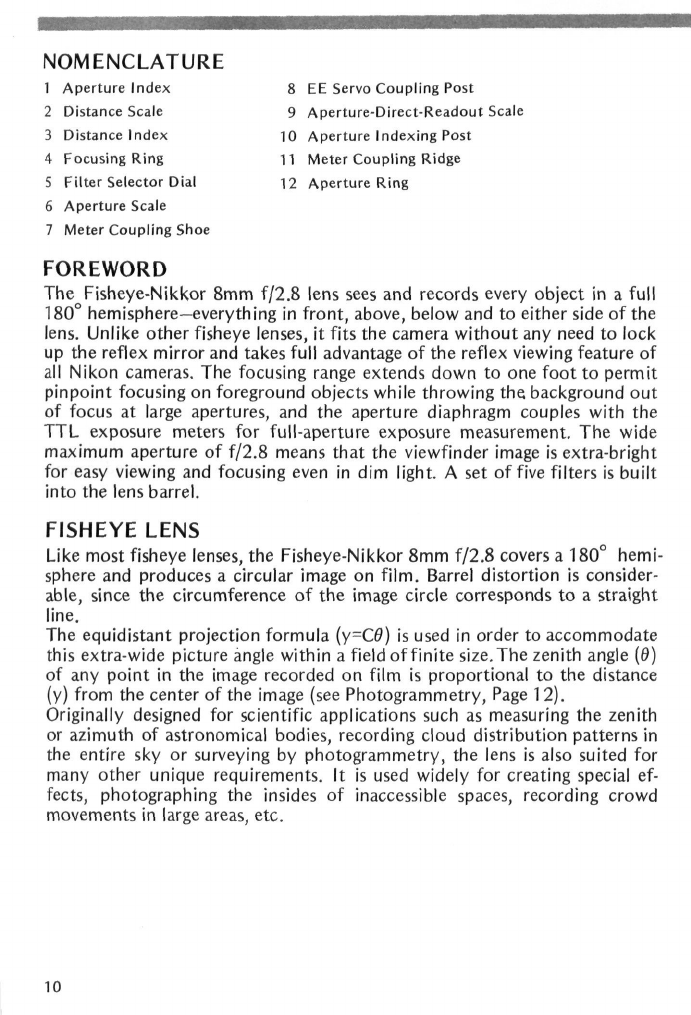
NOMENCLATURE
1 Aperture Index
2 Distance Scale
3 Distance Index
4 Focusing Ring
5 Filter Selector Dial
6 Aperture Scale
7 Meter Coupling Shoe
FOREWORD
The Fisheye-Nikkor 8mm f/2.8 lens sees and records every object in a full
180° hemisphere—everything in front, above, below and to either side of the
lens.
Unlike other fisheye lenses, it fits the camera without any need to lock
up the reflex mirror and takes full advantage of the reflex viewing feature of
all Nikon cameras. The focusing range extends down to one foot to permit
pinpoint focusing on foreground objects while throwing the background out
of focus at large apertures, and the aperture diaphragm couples with the
TTL exposure meters for full-aperture exposure measurement. The wide
maximum aperture of f/2.8 means that the viewfinder image is extra-bright
for easy viewing and focusing even in dim light. A set of five filters is built
into the lens barrel.
FISHEYE LENS
Like most fisheye lenses, the Fisheye-Nikkor 8mm f/2.8 covers a 180° hemi-
sphere and produces a circular image on
film.
Barrel distortion is consider-
able,
since the circumference of the image circle corresponds to a straight
line.
The equidistant projection formula (y=C0) is used in order to accommodate
this extra-wide picture angle within a field of finite
size.
The zenith angle (6)
of any point in the image recorded on film is proportional to the distance
(y) from the center of the image (see Photogrammetry, Page 12).
Originally designed for scientific applications such as measuring the zenith
or azimuth of astronomical bodies, recording cloud distribution patterns in
the entire sky or surveying by photogrammetry, the lens is also suited for
many other unique requirements. It is used widely for creating special ef-
fects,
photographing the insides of inaccessible spaces, recording crowd
movements in large areas, etc.
8 EE Servo Coupling Post
9 Aperture-Direct-Readout Scale
10 Aperture Indexing Post
11 Meter Coupling Ridge
12 Aperture Ring
10


















